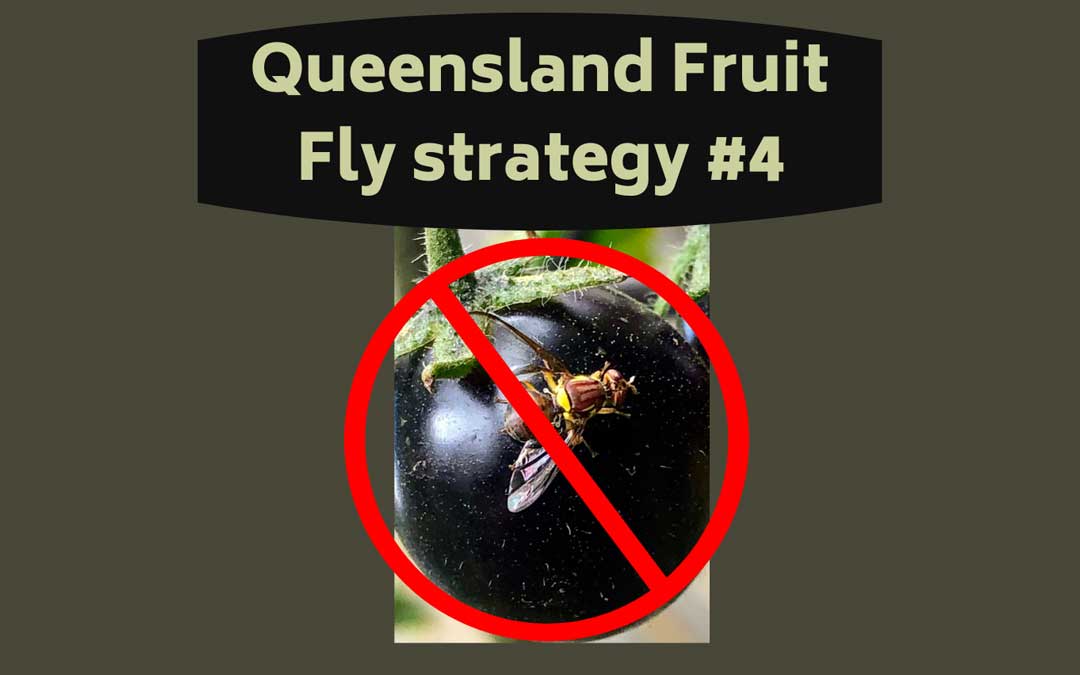Queensland Fruit Fly Strategy Blog #4 – Put out protein bait NOW!

In September the temperature at sunset, on some days, will reach 16C and Queensland Fruit Fly WILL MATE.
Initially, they will sting and lay eggs in citrus fruit and any fruit left on trees from last season, then they will infest stone fruit, apples, quinces and pears as the fruit form on these trees. This means you need to put out your protein baits NOW. Not only is QFF attracted to protein, but females also need a protein meal before mating.
Protein baits are very different to pheromone lures. Each fruit tree needs one bottle with bait whereas a normal suburban block needs only one pheromone lure.
You can buy Cera traps (protein bait) but these are quite expensive so alternatively you can use PET bottles, insert some holes and fill with homemade bait. However, you do need to empty and refill these bottles every 5 to 7 days as the liquid protein rots and stops attracting QFF.
You can also buy an Aussie made bottle from Sustainable Macleod.
Here are some instructions for homemade baits:
In an empty soft-drink bottle, cut three holes about the size of a 10 cent piece, 10cm from the top.
Recipe 1
Pour in 1 cup of 100 percent fruit juice (including pulp) and 1 tablespoon of cloudy ammonia (or wheelie bin cleaner).
(instructions thanks to Agriculture Victoria)
Recipe 2
Put a spoonful of vegemite (or brewers’ yeast) and a spoonful of sugar in the bottle, plus the peelings from an orange or lemon.
Add enough water to fill the bottle to about a third, put on the lid, and shake until the yeast extract and sugar have dissolved
(instructions thanks to ABC TV’s Gardening Australia program)
Other instructions:
- Tie a string around the neck of the bottle and hang it from the tree in the shade, 1m to 1.5m, off the ground.
- Hang out of reach of children and pets.
- Empty bottle including all insect bodies to refill. Refill every 5 – 7 days.
- Bees are not attracted to fermented baits but other beneficial insects may be.
Written by Robin Gale-Baker
